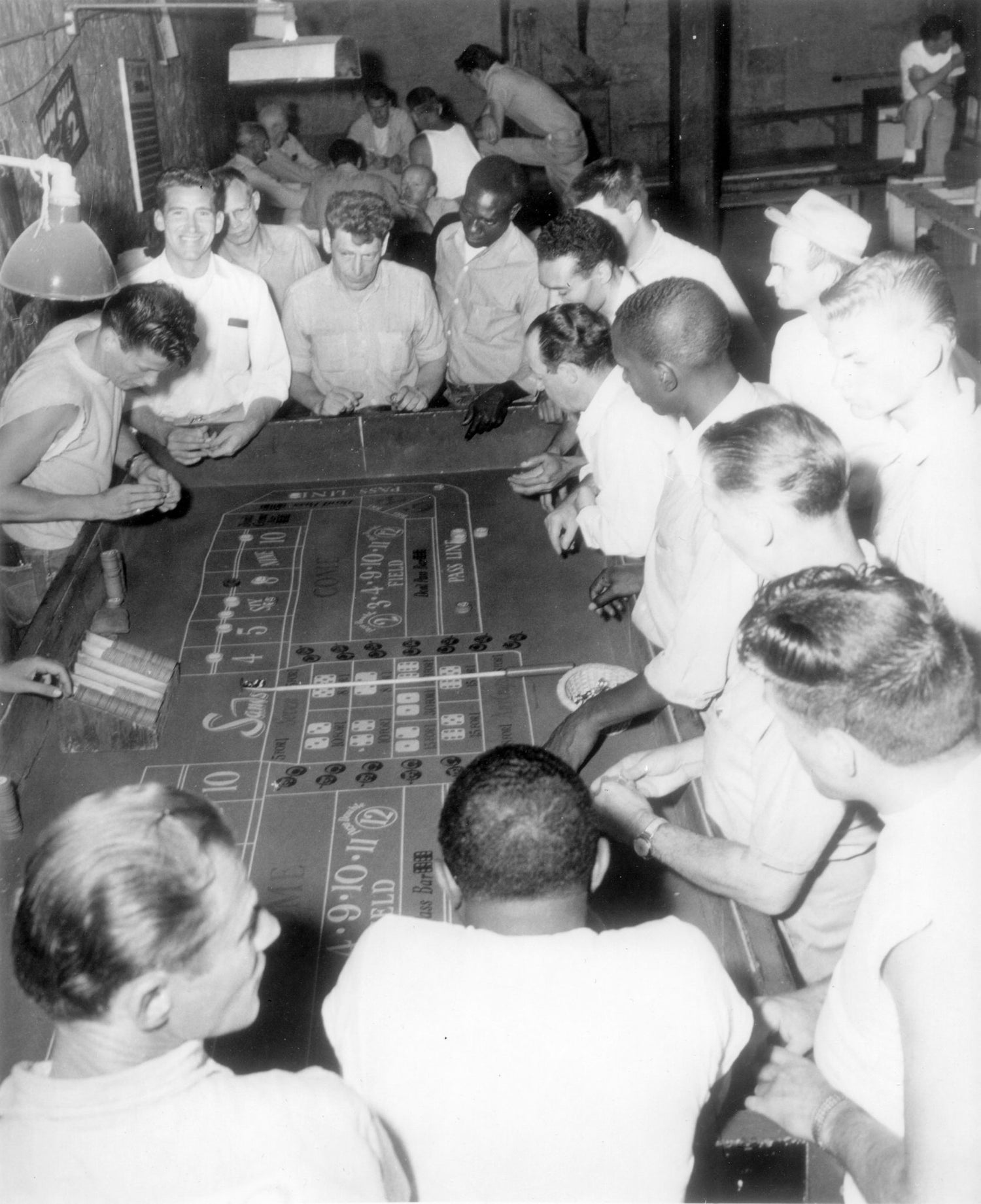The Big House Casino
With the legalization of gaming in Nevada, the Prison apparently saw no reason not to allow inmates to participate in organized and sanctioned gambling. Wardens provided space for gambling games and establishment of inmate game “owners”.
This practice is astounding to modern correctional practitioners, as it legitimized an underground inmate economy with the attendant negative opportunities for indebtedness between inmates, coercion, and inmate control of other inmates.

1932-1967
One-of-a-Kind Sports Book
Between 1932 and 1967 a Nevada style casino operated inside the Nevada State Prison. There is no other example in the history of penology in the United States where casino gambling was allowed. Indeed, this uniquely Nevada experience seems completely at odds with prison theory at the time.
Photo: The Casino's Sports Book

Casino Bullpen
For 35 years this inmate-run gambling operation coexisted in a place where vice is normally prohibited.
References to “legalized” gaming in the Nevada State Prison are not exactly correct. The prison was never issued a gaming license, or in any way recognized by Nevada gaming authorities. Rather, the casino was more or less ignored and tolerated.
If an application for license had been made, it surely would have been denied based on the unsavory character of the applicants, not to mention their criminal history.
Photo: The Bull Pen at the Nevada State Prison Casino

Self-Policed Vices
The casino was self-policed. The inmates who ran the games did not tolerate cheating or strong-arming for fear of getting shut down by the warden.
A percentage of the take was deposited in the inmate welfare fund, an act which added legitimacy to this “immoral habit”. During its heyday, the prison casino included blackjack, craps, poker, and sports betting.
Photo: Inmates play table games

Cleanest Game in the State?
Throughout its 35 years, various wardens either tolerated the casino or considered it a worthwhile distraction for the inmates.
Joe Conforte, convicted of attempted extortion, served three years at Nevada State Prison, and ran the casino.
Photo: Joe Conforte running tables at The Big House

Prison Currency
Prison Brass
The Casino did not use U.S. currency. Instead, what was called Prison Brass became the common prison currency.
Brass coins in denominations of 1, 2, 10, 25, and 50 cents, and 1 and 5 dollars, were used.
These coins still hold value today as collector's items.
Photo: Prison Brass of various denominations

No Gaming License, No Casino
The End of an Era
This changed in 1967 when Warden Carl Hocker, who was aware of the underground economy, tried to close the Casino.
A bill to prohibit prison gaming went to the State Legislature and was defeated in the Senate.
Shortly thereafter, Warden Hocker contacted the Gaming Control Board and inquired whether the Prison had a gaming license.
It did not, and the casino closed shortly thereafter. The sandstone building which housed the casino was demolished.
Photo: Demolition day at the Casino

Today
The small concrete remnant visible near the Culinary is all that's left of the Prison's now infamous Casino.
